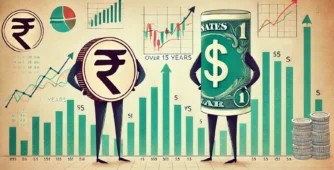A Glimpse into the 1945 Income Tax Rates
Back in 1945, the income tax rates were quite different from today. The rates were listed in old Indian currency terms, like pies and annas. For example, four annas equaled 25 percent. The top slab was at two annas, which translates to 12.5 percent. Despite the low rates, the tax structure started to change drastically after independence, leading to much higher rates in the following decades.

From 12.5% to 97%: A Historical Journey
Right after India gained independence, income tax rates began to rise significantly. During the Nehru era, the highest tax rate soared to an astounding 97 percent. This meant that individuals who previously paid 12.5 percent were now paying almost all their earnings in taxes. Such high rates created a challenging environment for taxpayers and led to widespread tax evasion and the creation of black money in the economy.
The Impact of High Tax Rates
High tax rates forced people to find ways to hide their income. Imagine working hard all year and having to give away 97 percent of your earnings. This situation led to a mentality where taxpayers were viewed with suspicion and seen as potential evaders. Even today, the income tax rate is around 39 percent, which still feels burdensome to many. When you add taxes on goods and services, the effective tax rate feels even higher.
Changing Mindsets and Tax Policies
There is a lingering mindset from the past that views high-income earners as guilty unless proven otherwise. This perspective needs to change. People who earn more and pay taxes should be seen as contributing positively to the economy. Celebrating productivity and fair taxation can encourage compliance and foster a healthier economic environment.
The Need for Stable Tax Policies
Frequent changes in tax policies create uncertainty. Every year, taxpayers worry about possible increases in rates or changes in capital gains taxes. This uncertainty makes long-term financial planning difficult. A stable and predictable tax regime would help people plan their finances better and reduce the stress associated with annual budget changes.
The government needs to find a balance where taxes are fair, and taxpayers feel they are not being overly burdened. Reducing unnecessary government expenditure and focusing on efficient use of resources can help lower the tax burden. Privatization and disinvestment in non-essential sectors can also contribute to a more streamlined and effective government.

Disclaimers and disclosures : https://tinyurl.com/2763eyaz
If you have any questions, please write to support@weekendinvesting.com












